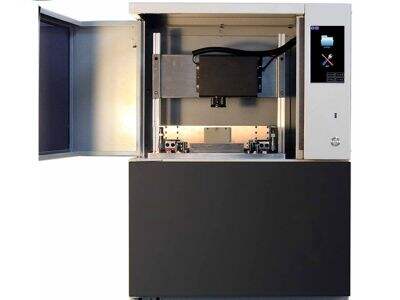You know what a DLP ceramic slurry 3D printer is? But we’ll break it down for you in an understandable way. These printers are neat because they can print 3-D objects using ceramic materials. However, not all DLP ceramic slurry printers are created equal! Today, we’ll take a close look at how different printers use different materials.
Key Things to Know
If you’re looking for DLP ceramic slurry 3D printers, consider these key things. For starters, know what materials the printer can work with. These printers are all compatible with different types of ceramic slurries, so you need to choose one that can handle the materials with which you’d like to work.
The second thing is the size of the printer. Some can accommodate bigger projects; others are better for making smaller ones. And if you want to print big ceramic sculptures, you need a printer that can accommodate larger sizes.
Material IncompatibilityVariability of Materials
Now we'll compare how various DLP ceramic printers handle materials. Some printers can work in a wide variety of ceramic materials, and others are limited to a few. You’ll want to find a model that can handle the materialsyou need, and some can print with a wide range of materials that have added to the convenience and versatility of these machines.
Additionally, specific printers may require certain settings in order to print materials well. This can affect how good your prints look and might require a bit of trial and error to get right. It’s good advice to do your research and ensure you pick a printer that can handle the materials you want to work with.
DLP vs SLA Ceramic Slurry Printers Pros and Cons
As with any technology, DLP ceramic slurry printers have their positives and their negatives. Glass Half The good news is that these ceramic printer can generate intricate, detailed ceramic objects that are difficult to make by hand. They work up relatively fast too, so you can make things more quickly than you would knitting or sewing.
But there are some things to hate, as well. DLP ceramic printers are also very expensive to purchase and maintain, both for the purchase price and the cost of materials. They’re also a messy medium to handle, as the ceramic slurry can be challenging to clean.
DLP Ceramic 3D Printing Material Alternative Options
In the world of DLP ceramic 3D printing, there is no shortage of material choices. Some ceramic printer can process standard ceramic materials, and others special varieties. We want to consider the properties of the material, including what it is made of and whether it is strong or durable.
In addition to regular ceramics, some printers may also work with a special feature of materials they can deposit, such as being able to conduct electricity or resist heat. That gives you more options for 3D printing, meaning you can print objects with different characteristics.
Specs of DLP Ceramic Printers
And finally, we are going to take closer look at the technical side of ceramic DLP printers. Those printers can differ in how clear their prints come out, how quickly they work and how large the objects they can create are. You’ll want to choose a model that suits your needs. sls ceramic printer with higher resolution can make more detailed prints, faster printers can create objects more quickly.
Also consider the software and support that the printer comes with. Some of the companies offer easy-to-use design and printing software, while others may be more difficult. It’s also a good idea to select a printer from a company that delivers good customer support and a strong warranty.

 EN
EN
 AR
AR
 BG
BG
 HR
HR
 CS
CS
 DA
DA
 NL
NL
 FI
FI
 FR
FR
 DE
DE
 EL
EL
 HI
HI
 IT
IT
 JA
JA
 KO
KO
 NO
NO
 PL
PL
 PT
PT
 RO
RO
 RU
RU
 ES
ES
 SV
SV
 TL
TL
 IW
IW
 ID
ID
 SR
SR
 SK
SK
 SL
SL
 VI
VI
 ET
ET
 HU
HU
 TH
TH
 TR
TR
 FA
FA
 MS
MS
 GA
GA
 CY
CY
 BE
BE
 IS
IS
 MY
MY

